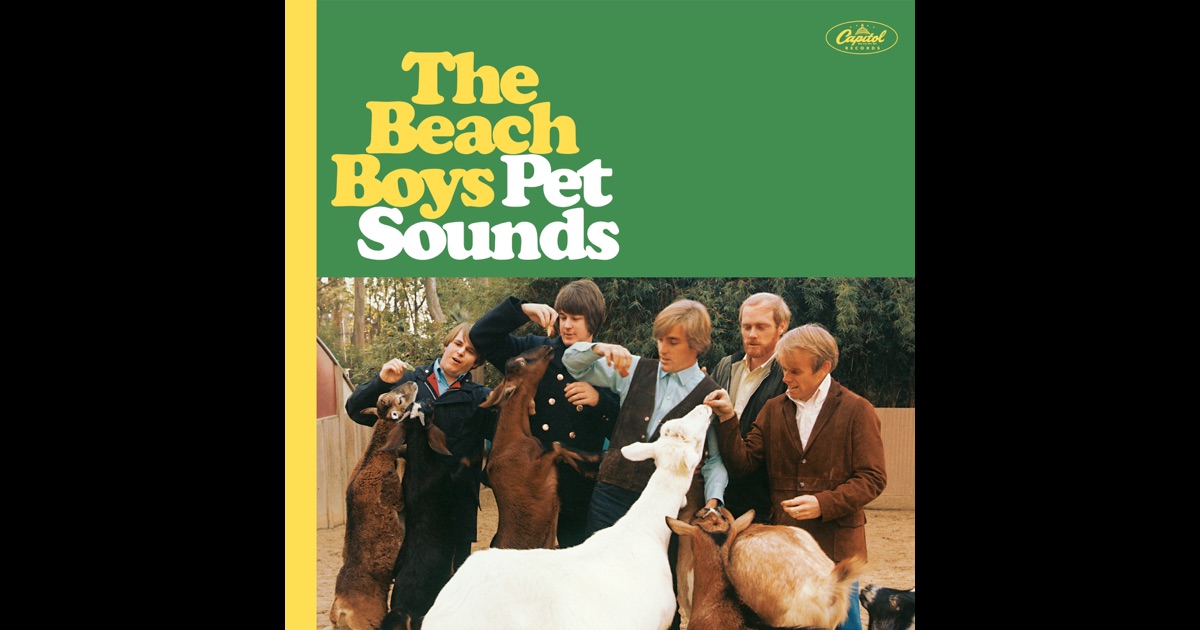

Just below, hear Pet Sounds’ saddest song, “Caroline, No,” in a vocal take featuring only Wilson. Then, there would be the magic moment when it all came together, and then you had your take. The more people you have in a given situation, the more chance there is for error. Then the next take, he would get it right, but somebody else would get it wrong. But it wouldn’t be the same person each time. At any one time, you would have four out of five of us get our parts just fine, and there would be one who would screw up. The end results are an especially impressive feat considering that the backing vocals were all recorded at once, with no overdubbing or any of the digital studio wizardry used today to nudge stray voices into the right pitch and rhythm:Īt the vocal sessions, there was so much good tension. Those demanding vocal recording sessions, Jardine wrote in the Pet Sounds liner notes, could last 12-15 hours a day. For the radio, we needed a more rock approach. My vocal had a much more mellow approach because I was bringing it from the folk idiom. Jardine assumed he would sing lead, but Wilson had a process: The phenomenon could emerge “only out of the ferment that characterizes today’s pop music scene,” said Leonard Bernstein when he heard “ Surf’s Up.” Despite the surface-level corniness, there were “really deep, profound emotions” in the band’s music, emotions “that came out of a lot of pain,” Linda Ronstadt remarked.Ī traditional folk song that originated in the Bahamas and was recorded in the sixties by everyone from Johnny Cash to Lonnie Donegan to the Kingston Trio, the arranging of the song took only 24 hours, Al Jardine remembers, from the time he brought it to Wilson as a possible cover to the time Wilson completed his version of the track. The immaculate vocal harmony that made them famous was their weirdest weapon of all a sunny fortress of euphony that shone through the darkest of times and strangest of lyrics in their latter days.” The Beach Boys tarnished their reputation when they reformed in later years and tried to “reclaim their wholesomeness,” Dan Caffrey writes at Consequence of Sound, “only to find that it had all but disappeared.” But in the days when they sounded like the most wholesome thing on earth, they also had the distinct advantage of sounding seriously weird: “Weirder than Waits, weirder than Zappa, and definitely weirder than the Beatles. Oddly, however, the film never talked about Wilson's mental illness (such as depression and OCD).especially as these qualities no doubt affected his work on the album.Jesus, that ear. Along the way, lots of experts talk about how and why it's such a great album.

So, when I saw this documentary just about the album and how it was made, I thought I should give it a look.Įssentially, the film discusses the background to the album, how it was made and, specifically, how each of the tracks was written and created. However, try as I might I had little idea WHY the album was so important. However, as I watched the film, I noticed that they talked a lot about Wilson's work on "Pet Sounds".a critically applauded album that was apparently one of the best of the 1960s.

It's an amazingly well made movie.one of the best I've seen in some time. Some time ago, I was thrilled to have seen "Love & Mercy"-the biopic about the Beachboys' leader, Brian Wilson and his struggle with mental illness and addiction.


 0 kommentar(er)
0 kommentar(er)
